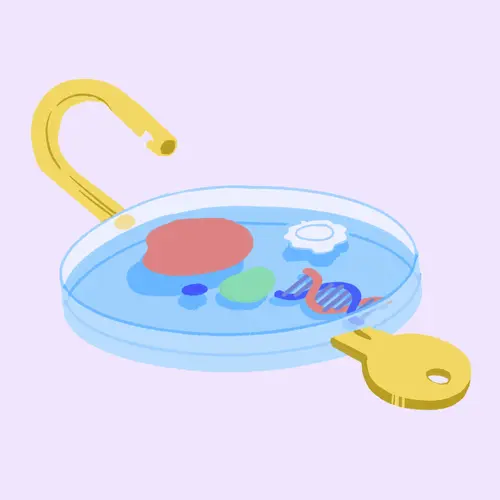
For decades, allergists and pediatricians believed two things about peanut allergy. First: New parents should wait to introduce peanuts to children until they were past infancy to lower the risk of a negative reaction. Second: If a reaction did happen, and an allergy was confirmed through testing, the only safe measure for the 80% of kids who never outgrow this food aversion was strict avoidance of peanuts -- for life.
While everyone agrees that a peanut allergy can trigger anaphylaxis -- hives, respiratory distress, vomiting, and, in some cases, even death -- guidelines are evolving on the other fronts, says Maria Garcia-Lloret, MD, a professor of pediatric allergy and immunology and co-director of the UCLA food allergy clinic.
"We now believe peanuts, which are not actually nuts but are legumes, should be given to babies as early as 4 months, when solids are first introduced," she says. "It should not be the very first food a parent gives; I suggest mixing a little bit of peanut butter in some oatmeal. However -- and this is critical -- babies with eczema and other established food allergies are considered high-risk. For those kids, introduction to peanuts should be carefully monitored under the guidance of a pediatrician."
In addition, Garcia-Lloret reports how the evidence now strongly suggests "kids and adults with existing peanut allergy can build sustained unresponsiveness through a process of gradual desensitization." In other words, slow and sustained exposure to peanuts under clinical guidance may reduce the risk for accidental anaphylaxis down the line.
The Results of Early Exposure
The shift in thinking came in 2015, when the results of a clinical trial known as LEAP (Learning Early About Peanut allergy) were published in The New England Journal of Medicine. (The study is supported by the National Institutes of Health and the Immune Tolerance Network.)
It revealed how early exposure to peanuts produced an 81% reduction in peanut allergy among high-risk children, deemed so because they had already tested positive for other food allergies and/or had eczema. More than 600 children ages 4 to 11 months either consumed, or strictly avoided, peanuts until age 5. Of the children who avoided peanuts, 17% had a peanut allergy by age 5, compared to only 3% in the peanut-consuming group.
Prevention vs. Desensitization
LEAP focuses on preventing peanut allergy; oral immunotherapy (OIT) focuses on retraining the immune system response in children and adults with a peanut allergy, which causes a mild to severe reaction in approximately 1% to 2% of the U.S. population.
Garcia-Lloret, who ran a 2016 UCLA clinical peanut allergy trial, is among several researchers in the U.S. now offering OIT desensitization in a clinical setting. She says the ongoing results from her program -- which tracks about 60 pediatric patients -- and from other programs like it strongly confirm LEAP's findings.
And, she says, her patients with peanut allergy have shown how gradual exposure to trace amounts of the peanut protein under clinical guidance -- followed by slowly increased doses each day over many months or even years -- builds immune tolerance.
Other desensitization approaches also under study include peanut protein exposure through the skin via a peanut patch, as well as placing droplets of the peanut antigen under the tongue.
And recent research shows that healthy infants and toddlers may be able to be introduced to multiple, potentially allergenic proteins (including peanut, soy, cashew, fish, and more) at the same time for several consecutive weeks without negative reactions. Some pediatricians are hopeful that this type of early introduction may help prevent allergy, but more research needs to be done.
Peanut Allergy on the Rise
Anxious parents may welcome the news. According to a FARE (Food Allergy Research & Education) study, allergy to peanuts is on the rise among U.S. children, with rates more than tripling between 1997 and 2008. Overall food allergy rates, including but not exclusive to peanuts, rose 50% between 1997 and 2011, the CDC says.
While the most common food allergies among kids ages 2 and younger are to milk and eggs, "80% outgrow these two food aversions," says Garcia-Lloret. Only 20% of children outgrow peanut allergy, making it a lifelong condition, which also has a disproportionately high rate of inducing severe, even life-threatening reactions, according to multiple studies.
Garcia-Lloret and other prominent researchers are still searching for the reasons why. "It's likely multifactorial, involving changes to the microbiome," she says of the body's complex immunological ecosystem and what may be triggering it to overreact to seemingly harmless proteins in foods. Overly sanitized modern life may be at root -- our love for antibacterial soaps and the overuse of antibiotics mean the body never confronts, and thus never fights off, all sorts of germs, which is what it's designed to do. It may be itching for a fight -- just the wrong one.
Other theories, she adds, include vitamin D deficiency -- kids playing inside on their computers rather than outside in the sunshine and dirt -- and how we mass-produce our food, with both cross-contamination and pesticides as possible factors. "It may be a combination of all these things working together," says Garcia-Lloret.
A Desensitization Success Story
No matter the causes, if you're a parent of a child with a dangerous peanut allergy, every meal must be monitored. Food labels must be scrutinized. And epinephrine auto-injectors are always at the ready at play dates, birthday parties, and restaurants.
Erica Broido from Los Angeles is such a mom. Her daughter Jemma, 12, is taking part in Garcia-Lloret's pediatric OIT program. Jemma is allergic to peanuts and to many tree nuts. She also has eczema and is considered high-risk.
Broido describes Garcia-Lloret's approach using desensitization. "It began with Jemma consuming just milligrams of peanut powder in Garcia-Lloret's clinic," she says. "We'd stay for a few hours under observation. When no reaction occurred, we'd leave. Then, I'd measure out that same amount of peanut powder -- I even purchased a diamond scale to get it exactly right -- each night at home for the next few weeks or even months until the doctor said Jemma was ready to up the dose."
Up-doses always happen in a medical setting, Broido says, with mandatory observation time before release. At times, Jemma did have stomach pain that was treated with an over-the-counter acid reducer (such as Pepcid or Tagamet) and a scratchy throat, treated with an antihistamine (such as Benadryl). Gradually, she built up immune-tolerance.
"We've been doing this for more than 2 years now. Jemma has graduated beyond the powder. She now consumes two regular peanuts at home each night," says Broido. And she's doing so lately, Broido says, without any negative immune response.
The goal is to reach what's called a maintenance dose, though researchers are still trying to find out exactly what a maintenance dose should be -- and for how long and how often it should be ingested to protect immune tolerance, says Garcia-Lloret.
According to the American Academy of Allergy, Asthma and Immunology, maintenance level is 3,000 milligrams of peanut powder, or the equivalent of five to 10 peanuts, consumed each day. But a promising oral medication for peanut allergy is being reviewed by the FDA, which sets its maintenance dose at just 300 mg, according to Garcia-Lloret.
For Jemma, getting to two peanuts a day feels monumental. Her big goal is to be able to finally eat "regular" nut-free Halloween candy, Broido says. That's because most popular chocolate bars are exposed to peanuts when they’re being made, including those without nuts in their regular ingredients, making them off-limits for anyone with a peanut allergy. Through OIT, she may be able to safely eat one this year.
Her mother is greatly relieved by such progress. "Jemma is brave -- that's just how she does life," Broido says of her daughter. "I was nervous, but that nervousness was outweighed by my trust in the process -- plus the prospect of no longer being terrified about keeping a child safe who is at such high risk."
Facts and Statistics
1/3 higher risk: If you're allergic to peanuts, you have a 25% to 40% higher chance of also being allergic to tree nuts, including almonds, cashews, and hazelnuts.
1.8 million kids: An estimated 1% to 2% of U.S. children have a mild to severe allergic reaction after eating or being exposed to peanuts.
94% of severe reactions: Peanut allergy is the most common food allergy because most people don't outgrow it. It also causes a disproportionate rate of life-threating anaphylactic reactions.
AR101: The name of the oral immunotherapeutic medication (a pill) being reviewed by the FDA as a potential treatment for peanut allergy in children ages 4 to 17.
2 times to 4 times more likely: Children with food allergies are at least twice as likely to have related conditions, including asthma and other nonfood allergies such as an allergy to pollen.
Close to half: More than 40% of children with food allergies have had a severe allergic reaction such as anaphylaxis.
Find more articles, browse back issues, and read the current issue of WebMD Magazine.
